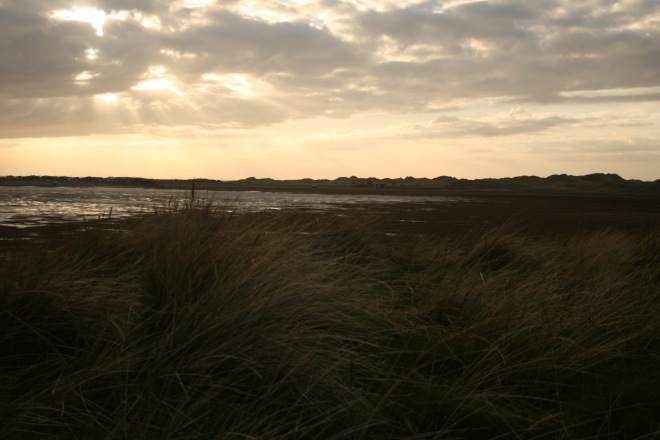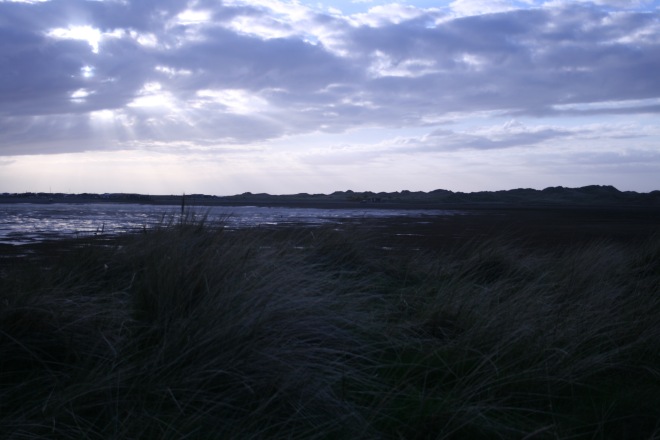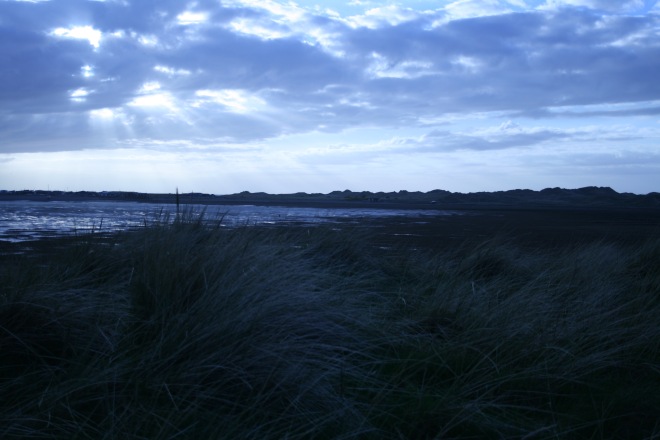The sun beams at the beach as the sun was going down were amazing and I though it would be worth going to shoot a wide DOF shot. I tried a couple of test shots using the manual setting. Initially the aperture was f10/1/500 but the shutter speed was too fast and resulted in under exposure. I then went to f/10 1/40 but this was over exposed ad looked flat and cold, removing the sunbeams from the shot.
I then started to get closer to a final shot and decided to use the tungsten WB setting to reflect the cold chill despite the sun being out. The setting enhances the sunbeams in the skyscape but the beach turns a bit silhouette, but not enough as there’s still some detail present.

By slowing down the shutter and allowing more light I managed to get a final shot that captured the amazing sky and the detail of the swooping beach. The wide depth of field stretches out to sea and captures the amazing beams landing on the sea in the distance. I think the composition of the diagonal sand swooping out to the lit sea really takes you on a journey to sunny warmth even though it was cold. Taken on a Monday and as a nod to New Order, I’d call the shot Blue Monday.

I’ve also included some warmer shots by using a wide depth of field and the cloudy and daylight WB options adding some yellow/orange tones.

I paricularly like the composition of the below, there is lots of untouched sand ripples in the foreground which leads you to the midground sand dunes and then further out to sea.








